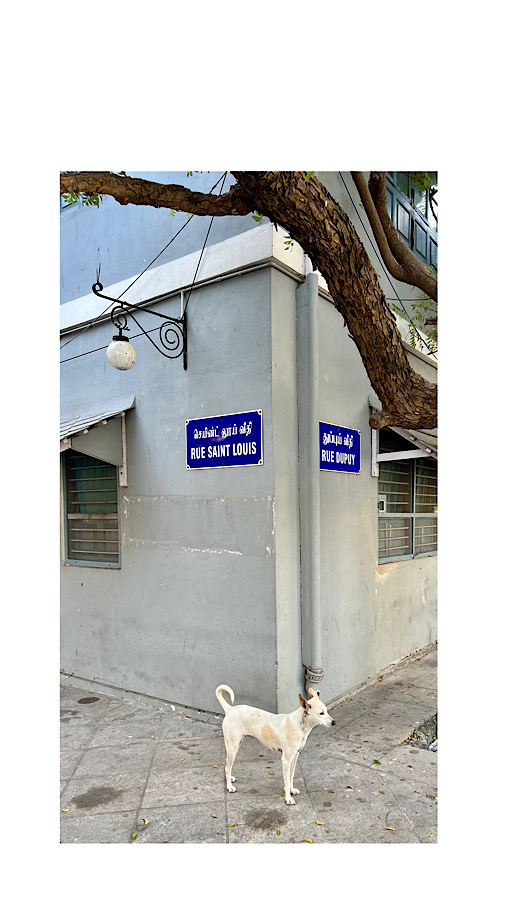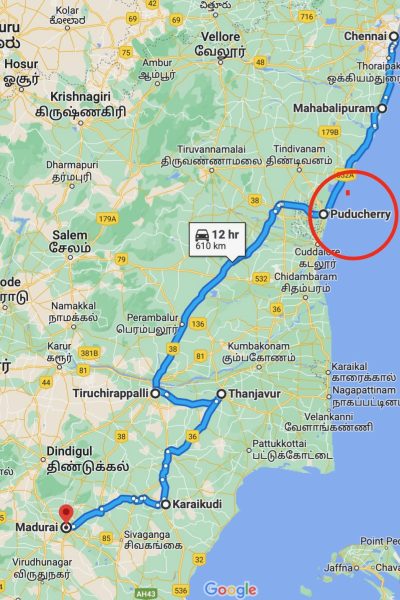
I can’t say I was much impressed by this old French enclave.
The town is divided in two by a filthy canal.
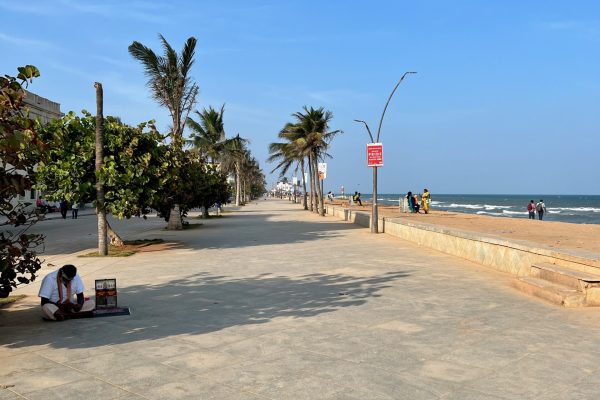
Seaside, the old French quarters called the White quarter. Very laid back, it has all the hallmarks of a French seaside town. Including a Hotel de Ville (Town Hall), a Governor’s mansion, Customs house, and of course a War memorial for those who died during the WW1. Now, opposite, an enormous statue of the Mahatma facing it of the promenade.
On the other side of the central canal is the so called Black quarter.
Same bustle and cacophony on both sides, as grey as the other except for public buildings.
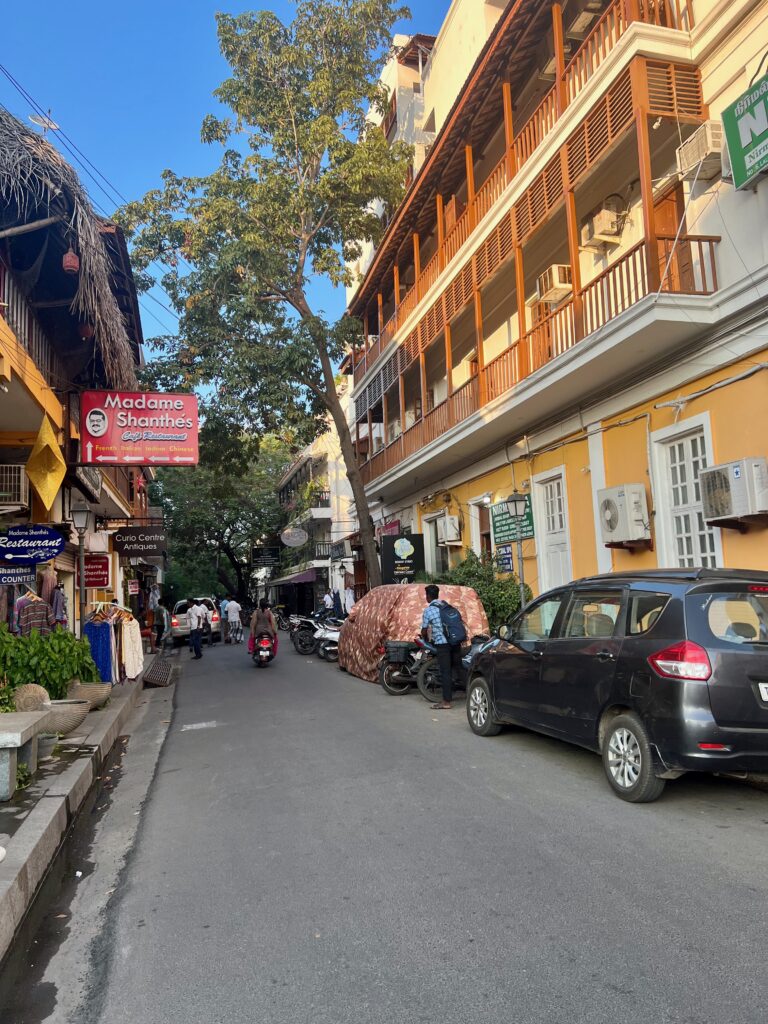
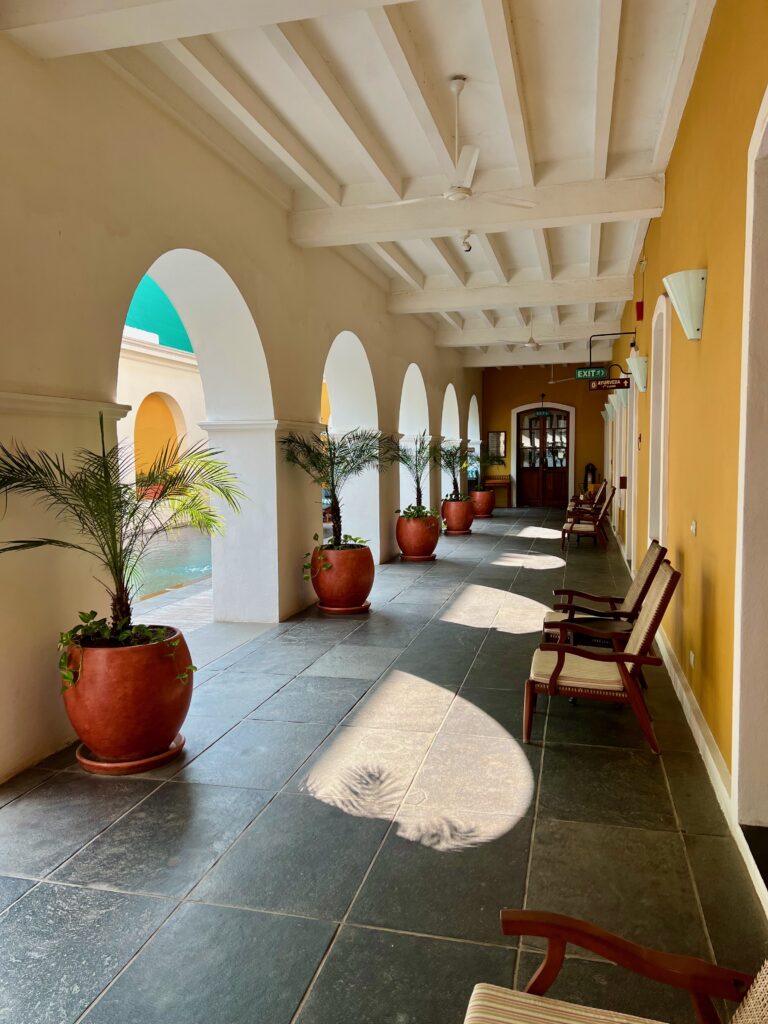
I stayed at an old colonial house transformed into a boutique hotel. High ceilings red floor tiles, breezy atmosphere.
In the room a notice:
« Wi-Fi is available across the property to enable you to stay connected at work. However, we at CGH Earth think that a holiday with us is best enjoyed unplugged or plugged minimally. Let nature lead your eyes and heart for a change. » And of course no WiFi access code is offered. Choice French style.

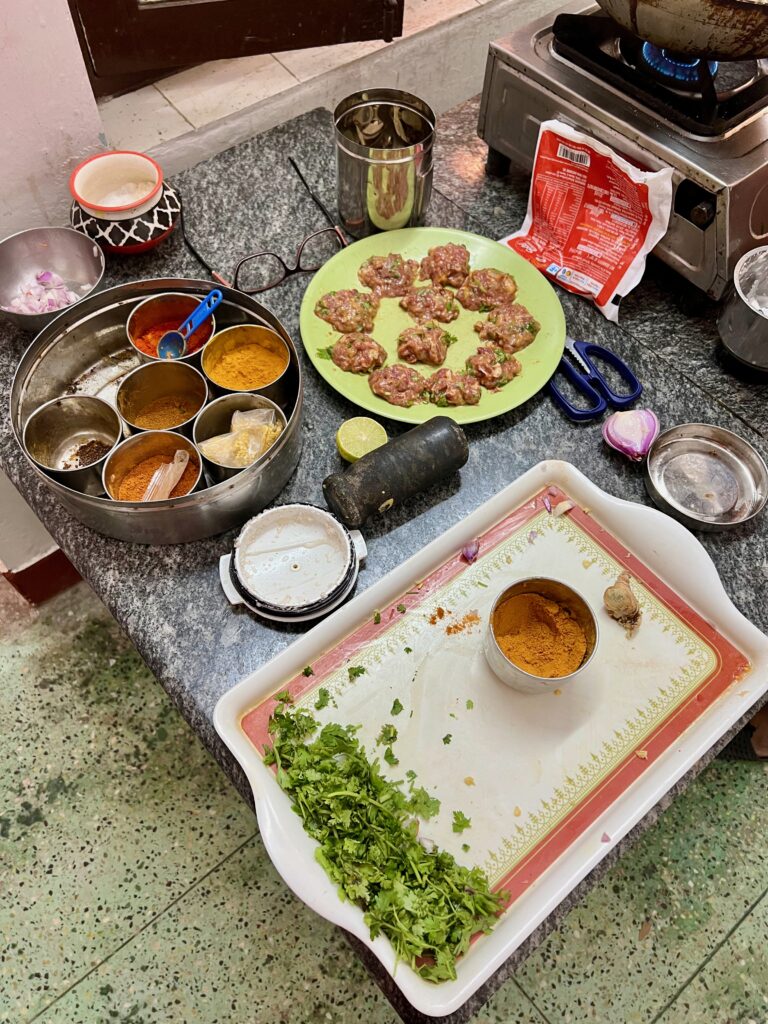
I took a cooking class to get a glimpse of how the delicious southern Indian food is made up.
The lady who gave the demonstration knew 6 languages (Tamul, Sanskrit, Bengali, Hindi, English, and French). She told me that in Puducherry, those who attend school here speak on average 4 to 7 languages !! The tongues of their mother and father (if different), Tamul (very difficult), English, and French. India recognises officially 20 languages out of the thousands that exist all around the country. And we are not talking about dialects, but languages as different as English is to French!
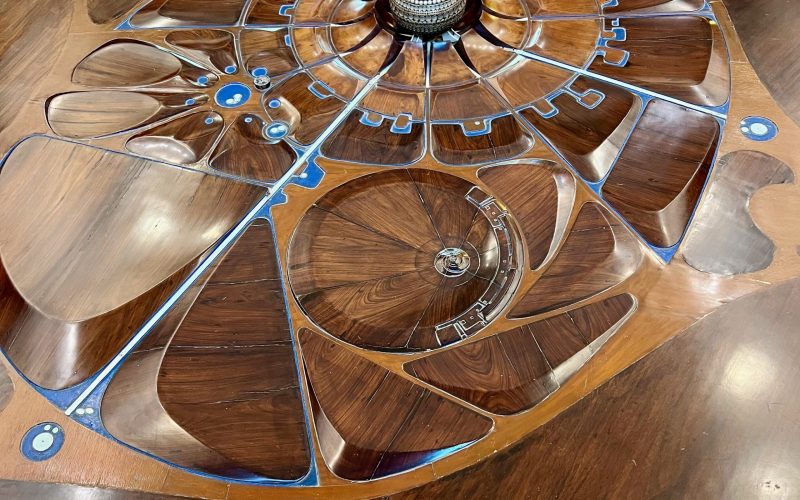
At about 10km north of Pondicherry is a communal land of about 20 square km. It is called Auroville. It has now existed for over 50 years and counts some 3,000 inhabitants, coming from more than 120 countries.
It started as an experimental community founded in 1968 by Mirra Alfassa (referred to as ‘Mother’). Her mission was to promote the philosophy and teachings of Sri Aurobindo. She was of French origin. He was Indian, educated for 14 years at St Paul’s (London) and Westminster (Cambridge). An education which he subsequently resolutely turned his back to, becoming instead an Indian revolutionary-turned-mystic. They both ran the ashram of Pondicherry.
After Sri Aurohindo’s death, Mother set out to found Auroville in 1968. Its stated purpose dedicated to human unity and evolution.
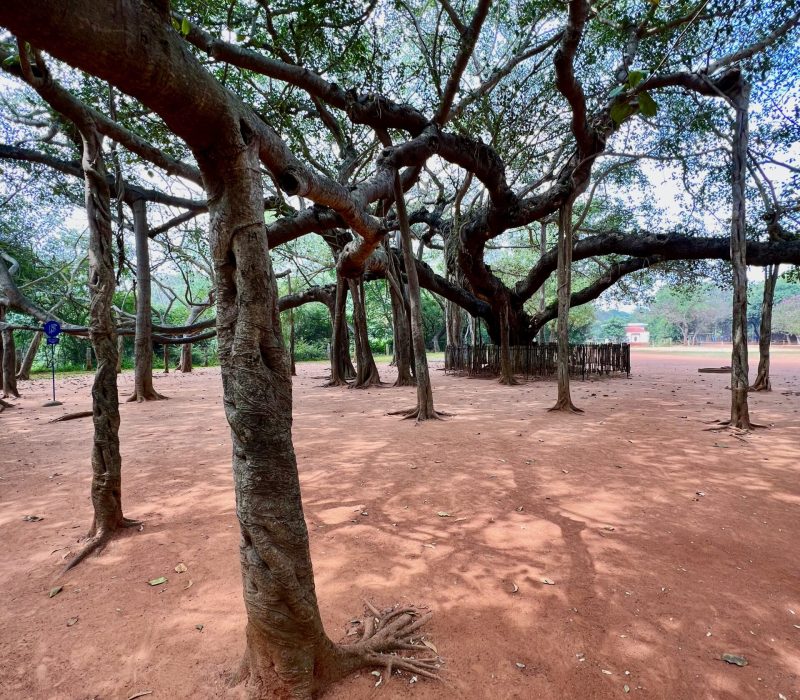
As you approach the complex at the heart of Auroville, there is a beautiful banyan tree. A single tree that just keeps expanding by dropping roots from its branches. A rich metaphor (and also the symbol of Buddhism).
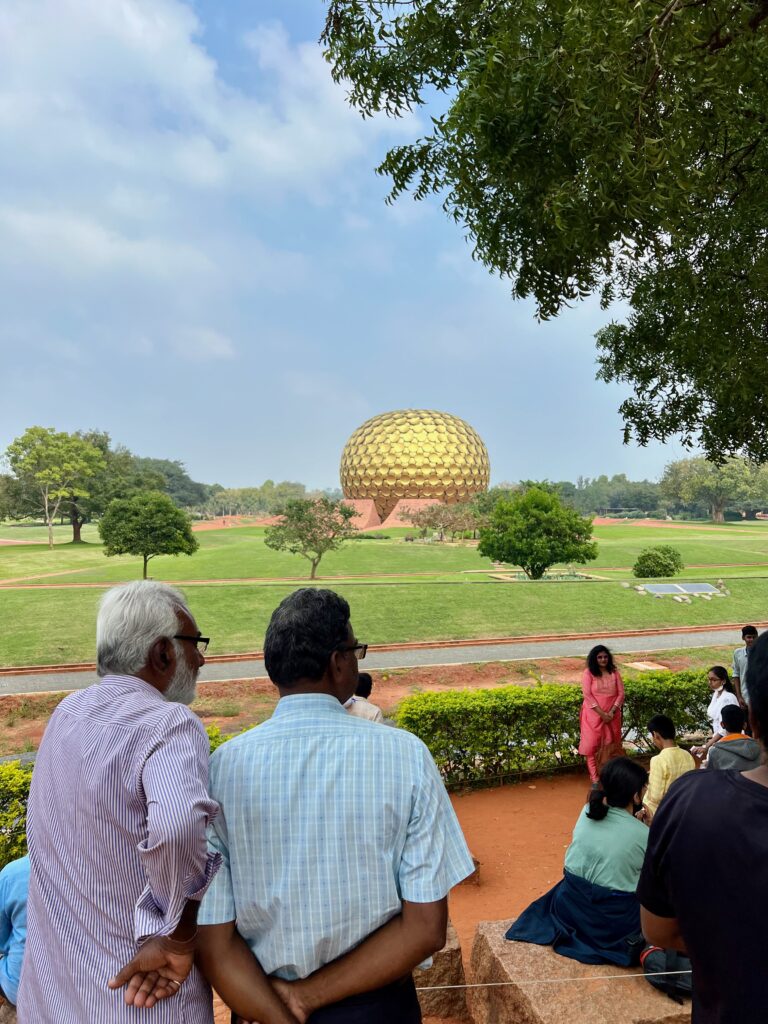
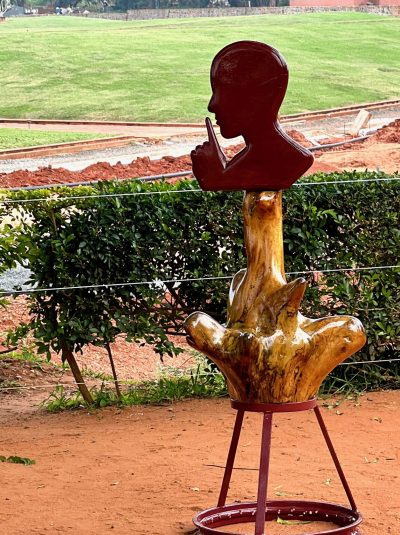
At the center of the complex is the Matrimandir, a golden sphere. In Mother’s eyes, it is “a symbol of the Divine’s answer to man’s aspiration for perfection”. It is a place for both individual and communal quest, with utopian aspirations. The general design of the site is quite beautiful, based on cosmic mouvements.
Around the central circle of Auroville is the so called Green belt, where many foreigners reside. The majority stay for 6 months at a time, before heading back home for the remainder of the year, during the hot season and monsoon. Which is just as well as foreigners can only stay for a maximum 6 months at a time, under current visa permits.
After Mother’s death, in 1973, the management of this experimental township passed from the Ashram of Pondicherry to the local government. Some think that as a result Auroville has lost its communal soul. It did not feel as a live spiritual place to me. More like place of historical significance.
The next morning we left Pondicherry with the light morning traffic. Still mayhem. Have a look:

